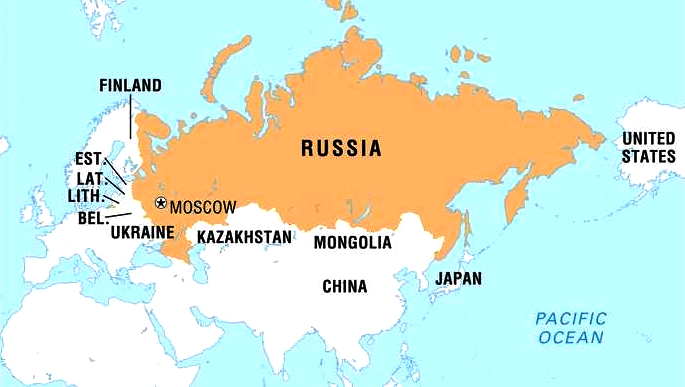International Relations
India-Russia Military Relations
- 02 Mar 2022
- 8 min read
For Prelims: Russia-Ukraine conflict, Operation Ganga, Various Defence Equipments India procure From Russia, Project 75I.
For Mains: Defence Technology, Bilateral Groupings & Agreements, India strategic ties with Russia, Russia-Ukraine conflict,
Why in News?
The evacuation of thousands of Indian students in Ukraine (Operation Ganga) is the most immediate impact of Russia’s war over Ukraine on India. However, the Russia-Ukraine conflict will have long-term implications too.
- For example, negotiating its relationships with the United States and other Western nations on one side, and the historically deep and strategic ties with Russia on the other.
- This will most significantly have an impact on the decades-old defence trade between India and Russia.
What is the History of India-Russia Defence Ties?
- India was reliant, almost solely on the British, and other Western nations for its arms imports immediately after Independence.
- However, this dependence weaned, and by the 1970s India was importing several weapons systems from the USSR (now Russia), making it the country’s largest defence importer for decades.
- Russia has provided some of the most sensitive and important weapons platforms that India has required from time to time including nuclear submarines, aircraft carriers, tanks, guns, fighter jets, and missiles.
- According to one estimate, the share of Russian-origin weapons and platforms across Indian armed forces is as high as 85%.
- Russia is the second-largest arms exporter in the world, following only the United States.
- For Russia, India is the largest importer, and for India, Russia is the largest exporter when it comes to arms transfer.
- Between 2000 and 2020, Russia accounted for 66.5% of India’s arms imports.
- Russia’s share in Indian arms imports was down to about 50% between 2016 and 2020, but it still remained the largest single importer.
What Defence Equipment does India procure From Russia?
- Submarines: The first submarine India ever got was also Soviet.
- The first Foxtrot Class submarine bought from the USSR entered Indian service in 1967 as INS Kalvari.
- Of the total 16 conventional diesel-electric submarines with the Indian Navy, eight are Kilo class, of Soviet origins.
- India has one indigenously manufactured nuclear ballistic submarine (INS Arihant) commissioned, of the four that are being built. However, a lot of the technology is based on Russian platforms.
- Frigates & Guided-missile Destroyers: Four of the Navy’s 10 guided-missile destroyers are Russian Kashin class, and 6 of its 17 frigates are Russian Talwar class.
- Aircraft Carrier: The only aircraft carrier in service with India, INS Vikramaditya is a Soviet-made Kiev-class vessel that came into service for the Indian Navy in 2013.
- Missile Program: India’s missile programme has been developed with significant help from Russia or the Soviets earlier.
- The BrahMos missile, which India will begin exporting soon, has been developed jointly with Russia.
- Fighter Aircraft: Russia has also been one of main exporters of fighter aircraft to India, including hundreds of Sukhoi and MiG jets. All six of the service’s air tankers are Russian-made Il-78s.
- Arms and Ammunitions: According to the International Institute of Strategic Studies (IISS), India’s present military arsenal is heavily stocked with Russian-made or Russian-designed equipment.
- Tanks: Indian Army’s main battle tank force is composed predominantly of Russian T-72M1 (66%) and T-90S (30%).
- Favourable Russian Military Exports to India: Much of Russia’s influence in India comes through its willingness to provide weapons systems and technologies that no other country will export to India.
- The US only provides non-lethal defence technology like C-130j Super Hercules, C-13 Globemaster, P-8i Poseidon etc.
- While Russia provides high-end technology like Brahmos supersonic missile, S-400 anti-missile system.
- Russia also continues to offer advanced weapons platforms at relatively attractive rates.
What can be the Impact of the Russia-Ukraine War on Military Supplies?
- At the moment there are two major defence deals between India and Russia that might be jeopardised by the current crisis.
- S-400 Triumf air-defence system Deal:
- The deal has been under the threat of American sanctions, even as the US had not decided on it yet.
- However, the fresh round of sanctions on Russia could jeopardise this deal.
- Joint Submarine Development: Russia has also pitched to make six Air Independent Propulsion (AIP-powered) conventional submarines for the Navy under the P75-I project, along with four other international bidders.
- India is also in talks with Russia to lease two nuclear-ballistic submarines, Chakra 3 and Chakra 4, the first of which is expected to be delivered by 2025.
What are India’s Plans to Diversify Arms Import Diversification?
- Over the last few years, there has been a conscious effort to expand the weapons platform bases to not only other countries but also domestically as well.
- Stockholm International Peace Research Institute (SIPRI) noted in its international arms transfer trends report last year that between 2011–15 and 2016–20 arms imports by India decreased by 33%.
- In 2011–15 the USA was the second-largest arms supplier to India, but in 2016–20 India’s arms imports from the USA were 46% lower than in the previous five-year period, making the USA the fourth-largest supplier to India in 2016–20.
- France and Israel were the second and third largest arms suppliers to India in 2016–20.
Way Forward
- As India perceives increasing threats from Pakistan and China and as its ambitious plans to produce its own major arms have been significantly delayed, it is planning large-scale programmes for arms imports.
- India’s outstanding deliveries of combat aircraft, air defence systems, ships and submarines, India’s arms imports are expected to increase over the coming five years.
- Therefore, it is important for India to diversify its base, to not become too reliant on any single nation, as it can become a leverage that can be exploited by that nation.







